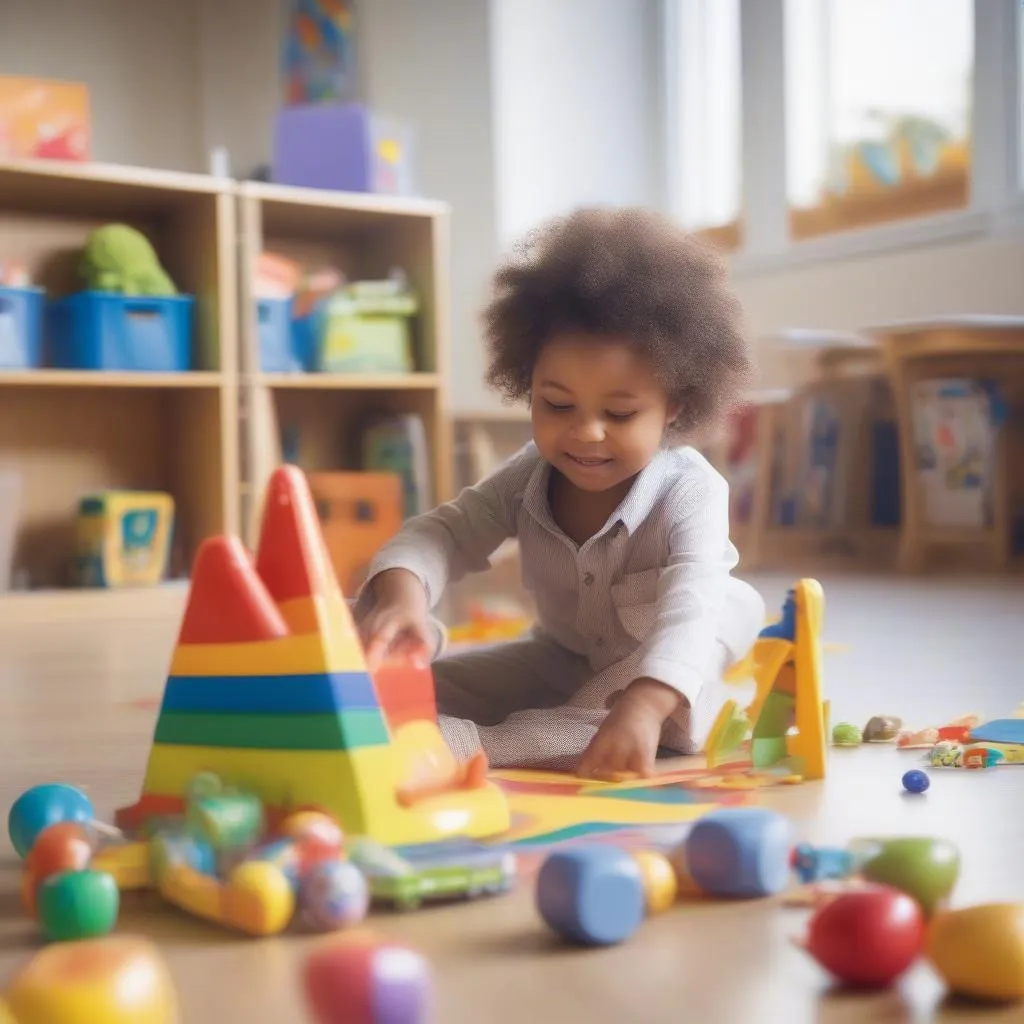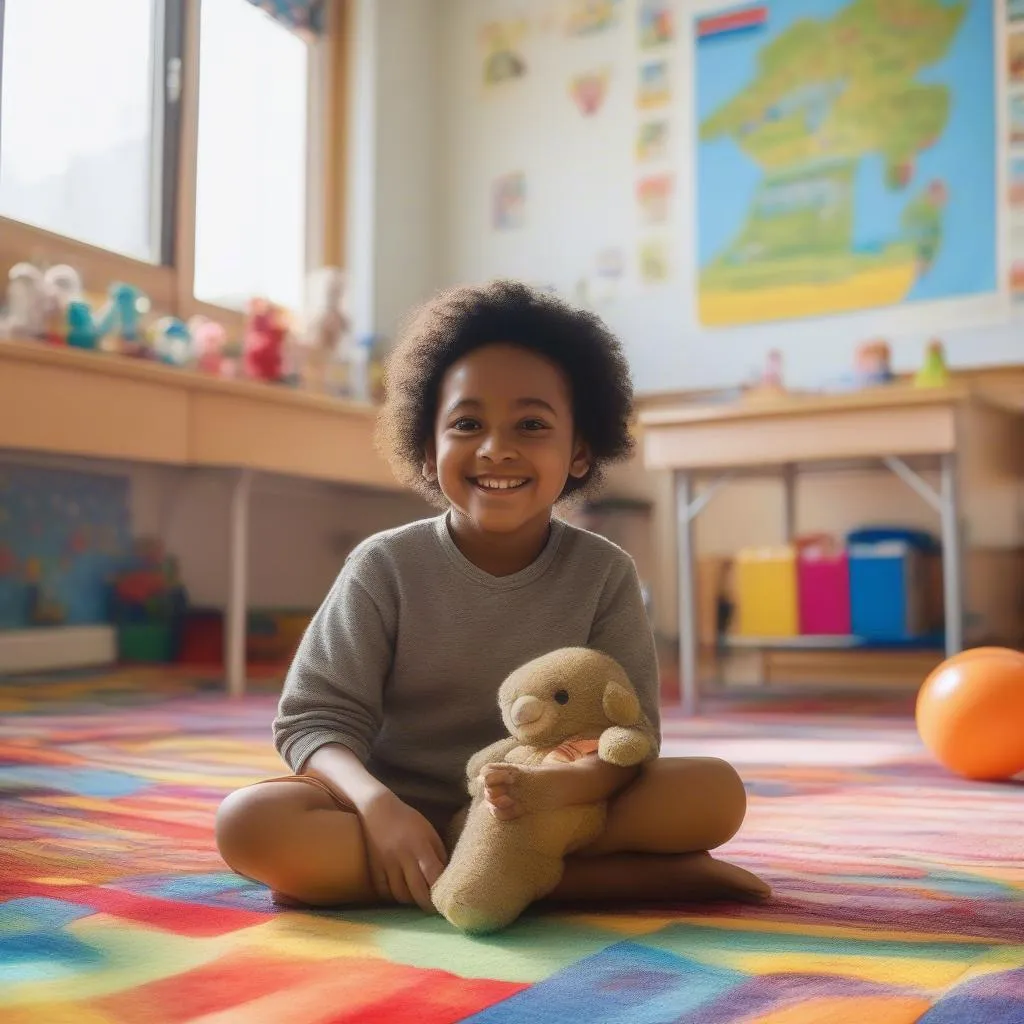“Honey, how are you feeling?” – This seemingly simple question is the key to unlocking the rich inner world of preschoolers. And the “emotion corner” is the ideal space for children to freely explore, express, and learn to manage their emotions in a natural, healthy way.
What is a Preschool Emotion Corner?
Have you ever wondered why preschoolers often express their emotions directly and intensely? This is because their nervous systems are still developing, and they haven’t yet developed the ability to control and regulate emotions effectively. The emotion corner, designed as an “emotion nursery” for preschoolers, helps children learn to recognize, express, and manage emotions positively, appropriate for their age.
Benefits of Emotion Corners for Children
The emotion corner is not just a place where children can freely express their emotions; it also brings many practical benefits to their development. According to early childhood education expert Dr. Nguyen Thi Thu Ha, “The emotion corner is key to helping children develop social skills, communicate effectively, and build strong self-esteem.”
Helping Children Recognize and Understand Their Emotions
 A colorful and inviting emotion corner in a preschool classroom, designed to help children explore their feelings.
A colorful and inviting emotion corner in a preschool classroom, designed to help children explore their feelings.
Imagine a child playing happily, suddenly having their favorite toy taken away by a friend. How would they feel at this moment? The emotion corner helps children name their feelings: “Ah, I’m feeling angry!” From there, children gradually understand themselves and the emotions they experience.
Creating Opportunities for Children to Express Emotions Safely
Preschoolers often express emotions directly, which can be through screaming, crying, or even hitting. The emotion corner provides children with tools and a safe space to express their emotions in a healthy way. For example, children can draw, act, sing, dance… to release negative emotions such as sadness or anger.
Learning Effective Emotion Management
 Preschool children using emotion cards in an emotion corner to learn about different feelings.
Preschool children using emotion cards in an emotion corner to learn about different feelings.
“Has anyone ever taught your child how to manage emotions when they are angry?” The emotion corner is where children learn how to handle emotions effectively, avoiding negative actions. Children are guided on how to take deep breaths, count numbers, play games… to calm negative emotions and replace them with positive actions.
Developing Social Skills and Effective Communication
In the emotion corner, children have the opportunity to interact with friends, learn to listen, share, and empathize with others. Children learn how to express their emotions politely, sensitively, and respectfully of others’ feelings.
How to Create an Effective Emotion Corner for Children
To create an effective emotion corner for children, parents and teachers need to keep in mind a few things:
Choose a Suitable Space
The emotion corner should be located in a quiet, private place, creating a feeling of comfort and safety for children. Soft colors should be used, decorated with fun images that attract children’s attention.
Prepare Supporting Tools
The emotion corner needs to be fully equipped with tools to help children express emotions effectively. For example:
- Emotion box: Including images and symbols representing basic emotions such as happy, sad, angry, scared…
- Books about emotions: Books that tell stories related to emotions, helping children easily empathize and better understand their own emotions and those of others.
- Creative materials: Paper, crayons, clay, toys… help children express emotions through creative activities such as drawing, coloring, sculpting clay…
- Mirror: Helps children observe their own emotional expressions on their faces.
Create a Comfortable and Safe Atmosphere for Children
Parents and teachers need to create a comfortable and safe atmosphere for children to freely express their emotions. Take time to listen to children, share stories about emotions, and help children find ways to solve emotion-related problems.
Actively Encourage Children to Participate
Parents and teachers should regularly encourage children to participate in activities in the emotion corner. Create conditions for children to freely choose activities they love, while guiding them to use the tools effectively.
Child’s Emotions, What Should Parents Do?
“Honey, how are you feeling?” – This seemingly simple question is the key to unlocking the rich inner world of preschoolers.
- Listen to and respect your child’s emotions: Never ignore or underestimate your child’s emotions. Let your child know that you care about their feelings and are always there for them.
- Help your child name emotions: Teach your child to recognize and name basic emotions such as happy, sad, angry, scared… You can use stories, songs, and games to help children learn easily.
- Help your child solve problems: When your child encounters emotion-related problems, work with them to find peaceful and positive solutions. For example, when a friend takes your child’s toy, you can guide your child to talk to their friend, play another game together, or find a way to share toys.
- Be a role model for your child: Parents and teachers are role models for children. Express emotions healthily and manage emotions effectively to set an example for children.
Conclusion
The emotion corner is an important part of the emotional development of preschoolers. Let’s join hands to create a safe, ideal “emotion nursery” for children to freely explore, express, and learn to manage their emotions naturally and healthily.
Please share this article with your loved ones to create the best educational environment for preschoolers!
Want to learn more about effective preschool education methods? Contact us via phone number: 0372999999 or come directly to the address: 234 Hao Nam, Hanoi. We have a team of experienced experts ready to assist you.